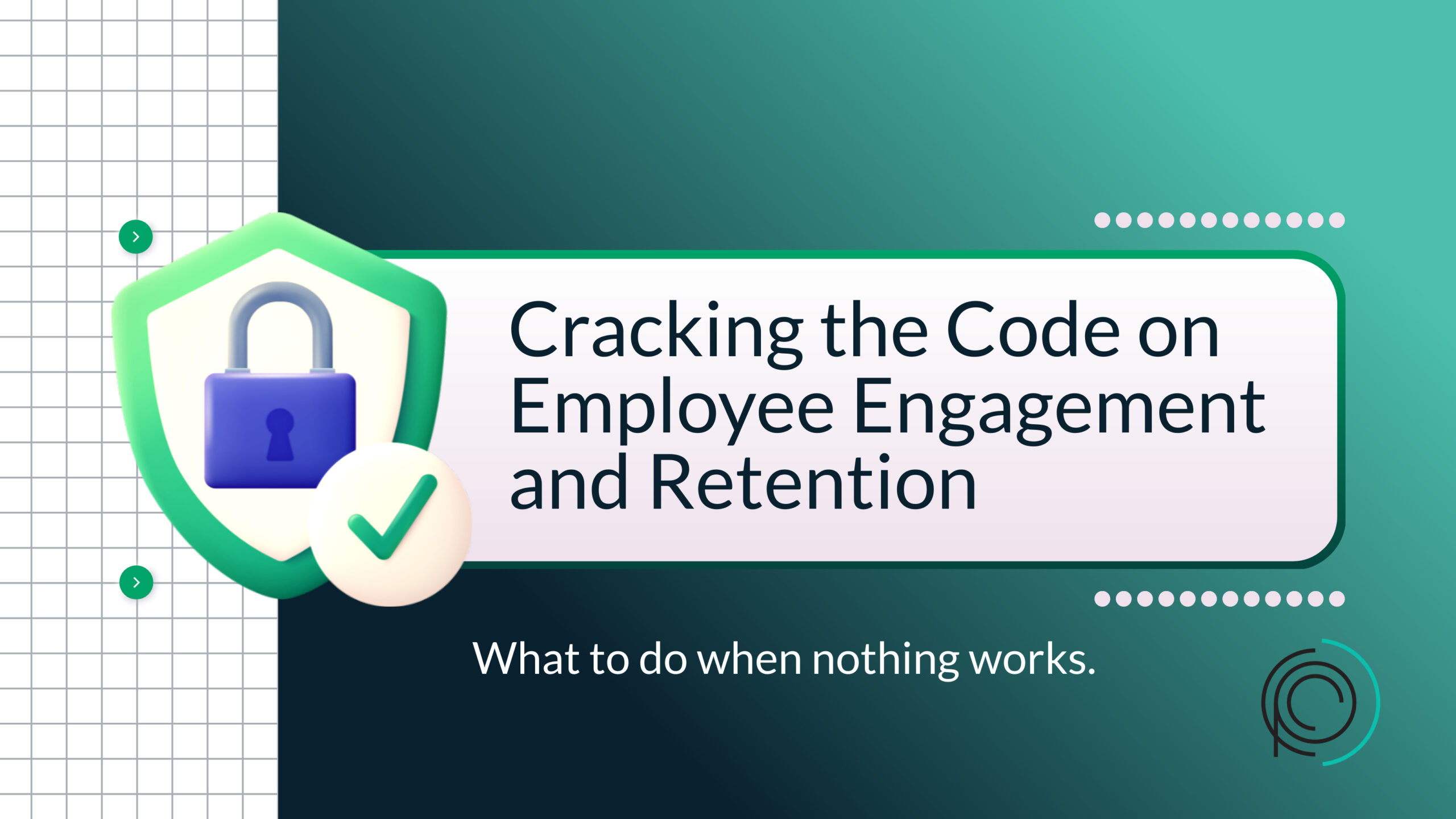Is Your Workflow Working? A Comprehensive Guide to Process Evaluation and Optimization
Ensuring that your processes are effective for your business, team, and customers is essential for success. This means regularly evaluating and optimizing workflows, fostering strong communication within the team, and consistently meeting customer expectations through high-quality service and products. By doing so, we can achieve sustained growth and maintain a competitive edge in the market. This guide is designed to help business leaders, warehouse managers, call center operations, COOs, and operations managers determine if their processes truly deliver value and meet the business’s and its customers’ needs. Read on to learn how to evaluate your processes, identify areas for improvement, and take action if your processes aren’t working as intended.
The Importance of Effective Processes
Effective processes are vital for any business. They streamline operations, reduce costs, and improve customer satisfaction. But how do you know if your processes are effective? This section will explore why it’s essential to continually evaluate your processes and their impact on your business.
First, effective processes ensure operational efficiency. When processes are well-designed, tasks are completed faster, with fewer errors, and at a lower cost. This efficiency translates into better use of resources and higher productivity.
Second, effective processes enhance customer satisfaction. When your processes are aligned with customer needs, you can deliver products and services more quickly and reliably. This can lead to higher customer retention and positive word-of-mouth referrals.
Finally, effective processes drive business growth. By identifying and eliminating bottlenecks, you can scale your operations more seamlessly, adapt to changing market conditions, and capitalize on new opportunities.
Signs Your Processes Might be Failing
Recognizing the signs of failing processes is the first step toward making improvements. Here are some common indicators that your processes aren’t working as they should.
One sign is frequent errors and rework. If your team spends a lot of time correcting mistakes or redoing work, it’s a clear indication that the process is flawed.
Another sign is missed deadlines. Consistently failing to meet deadlines suggests that your processes are inefficient and need reevaluation.
Lastly, low employee morale can be an indicator. When employees are frustrated with inefficient processes, it can lead to decreased motivation and productivity.
Evaluating Your Processes
To determine if your processes are working, you need a systematic approach to evaluation. This involves setting clear goals, gathering data, and analyzing performance against these goals.
Start by defining what success looks like for your process. This could be measured in terms of time, cost, quality, or customer satisfaction. For example, a successful warehouse process might involve minimizing order fulfillment times while maintaining accuracy.
Next, gather data on your current process performance. This could involve tracking key performance indicators (KPIs), such as cycle time, error rates, or customer complaints. Use tools like time-tracking software or customer feedback surveys to collect this data.
Finally, analyze the data to identify trends and areas for improvement. Look for patterns in the data that suggest where the process is breaking down. For example, if error rates are high during a specific shift, this could indicate a need for additional training or resources.
The Role of Technology in Process Evaluation
Technology can play a significant role in evaluating and improving your processes. From data analytics tools to automation software, there are many technologies available to help you gain insights into your processes.
Data analytics tools can help you make sense of the data you collect. These tools can identify trends, correlations, and outliers that might not be immediately apparent. For example, using a tool like Tableau, you can create visualizations that highlight where processes are lagging.
Automation software can also help streamline your processes. By automating repetitive tasks, you can reduce errors and free up your team to focus on more strategic work. For example, using Robotic Process Automation (RPA) tools, you can automate data entry tasks in your call center operations.
Additionally, workflow management software can help you map out and monitor your processes. Tools like Trello or Asana allows you to create visual process maps, assign tasks, and track progress in real time.
Engaging Your Team in Process Evaluation
Your employees are a valuable resource when it comes to evaluating your processes. They are often the first to notice inefficiencies and have ideas for improvement. Here’s how to engage your team in process evaluation.
First, encourage open communication. Create an environment where employees feel comfortable voicing their concerns and suggestions. Hold regular meetings to discuss process performance and gather feedback.
Second, involve employees in the evaluation process. Assign team members to track KPIs and analyze data. This not only gives them a sense of ownership but also provides you with diverse perspectives on the process.
Finally, recognize and reward contributions. When employees identify problems or suggest improvements, acknowledge their efforts. This can motivate others to participate in the evaluation process.
Customer Feedback as a Valuable Metric
Customer feedback is an essential metric for evaluating your processes. Your customers’ experiences can provide valuable insights into the effectiveness of your processes and highlight areas for improvement.
One way to gather customer feedback is through surveys. Send out regular surveys to your customers asking about their experiences with your products or services. Questions could cover aspects like delivery times, product quality, and customer service.
Another method is monitoring social media and online reviews. Customers often share their experiences on social media platforms like Instagram, TikTok, Facebook, and Yelp. Analyzing this feedback can help you identify common issues and areas for improvement.
Lastly, consider setting up a customer advisory board. This group of loyal customers can provide ongoing feedback and suggestions for enhancing your processes.
Benchmarking Against Industry Standards
Benchmarking your processes against industry standards can provide a valuable reference point for evaluation. By comparing your performance to that of similar organizations, you can identify areas where you excel and those that need improvement.
Start by identifying key benchmarks in your industry. These could include metrics like average order fulfillment time, customer satisfaction scores, or cost per unit.
Next, gather data on your competitors’ performance. This information can be obtained through industry reports, market research, or networking with industry peers.
Finally, compare your performance to these benchmarks. Identify areas where you fall short and develop action plans to close the gap. For example, if your order fulfillment times are longer than the industry average, consider investing in warehouse automation to speed up the process.
Identifying Bottlenecks and Inefficiencies
Bottlenecks and inefficiencies can significantly impact your process performance. Identifying and addressing these issues is crucial for improving your processes.
One method for identifying bottlenecks is process mapping. Create a visual representation of your process, highlighting each step and the flow of work. This can help you spot areas where work is piling up or delays are occurring.
Another method is conducting time and motion studies. Observe and measure how long each task takes to complete. This can help you identify tasks that are taking longer than expected and might need reengineering.
Lastly, use process simulation software tools to create virtual models of your processes and test different scenarios. This can help you identify potential bottlenecks and test solutions before implementing them in the real world.
Continuous Improvement and Process Optimization
Process evaluation is not a one-time activity. For your processes to remain effective, you must commit to continuous improvement and optimization at least annually.
Implementing continuous improvement methodologies tailored to your business structure and ensuring you do the work in an unbiased fashion will be key. Continuous improvement methodologies provide a structured approach for identifying and eliminating waste, improving quality, and increasing efficiency.
Regularly review and update your processes. Set a schedule for process reviews and stick to it. This could be quarterly, bi-annually, or annually, depending on the complexity of your processes.
Finally, stay informed about industry trends and best practices. Attending conferences, reading industry publications, signing up for our newsletter, and networking with peers to keep up to date with the latest developments in process management. If you’re ready to get started, contact one of our experts today.
Handling Resistance to Change
Change can be challenging, and you may encounter resistance when trying to improve your processes. Here’s how to handle resistance and ensure a smooth transition.
First, communicate the benefits of the change. Explain how the new process will improve efficiency, reduce costs, or enhance customer satisfaction. Provide concrete examples and data to support your points.
Second, involve employees in the change process. Seek their input and address their concerns. This can help build buy-in and reduce resistance.
Lastly, provide training and support. Ensure that employees have the skills and resources they need to adapt to the new process. Offer training sessions, create user manuals, and provide ongoing support.
What to Do When Your Processes Aren’t Working
If you’ve determined that your processes aren’t working, it’s time to take action. Here’s a step-by-step approach to addressing ineffective processes and ensuring long-term improvements.
First, prioritize the issues. Conduct a thorough analysis to identify the most critical problems that need immediate attention. This involves gathering data, consulting with team members, and understanding the areas that are causing the most significant delays or inefficiencies. Focus on areas that have the greatest impact on your business and customers, as resolving these will yield the highest benefits.
Second, develop a plan for improvement. Outline the steps needed to address the issues and set clear goals and timelines. This plan should include detailed actions, potential challenges, and mitigation strategies. Involve key stakeholders in the planning process to ensure that all perspectives are considered. Assign responsibilities to team members to create accountability and ownership, and ensure everyone understands their roles and the overall objectives.
Finally, implement the changes and monitor progress. Roll out the improvements in a structured manner, possibly starting with a pilot phase to test the changes on a smaller scale. Track their impact on process performance using key performance indicators (KPIs) and other metrics. Conduct regular reviews to assess progress and make adjustments as needed. Continue to seek feedback from employees and customers, as their insights can provide valuable information for further refinements.
By following these steps, you can effectively address process inefficiencies and create a more streamlined and productive workflow that benefits both your business and your customers.
Measuring the Success of Process Improvements
Once you’ve made improvements to your processes, it’s essential to measure their success to ensure they achieve the desired outcomes. Here’s a comprehensive guide on how to evaluate the effectiveness of your process changes.
First, compare performance metrics before and after the changes. Use the same Key Performance Indicators (KPIs) you tracked during the initial evaluation to measure the impact of the improvements. Look for tangible improvements in critical areas like cycle time, error rates, and customer satisfaction. For instance, a reduced cycle time indicates a more efficient process, while a lower error rate suggests higher quality and fewer mistakes. Improved customer satisfaction scores can be a direct result of smoother and more reliable processes.
Second, gather qualitative and quantitative feedback from employees and customers. Employees who are directly involved in the processes can provide valuable insights into how the changes have affected workflow and productivity. Customers, on the other hand, can share their experiences and highlight any differences they’ve noticed in service quality. Utilize surveys, interviews, or focus groups to collect this feedback. This will help you understand the broader impact of the process changes from multiple perspectives and identify any lingering issues that need to be addressed.
Third, conduct periodic reviews and monitor the process over time. Schedule regular check-ins, such as monthly or quarterly reviews, to assess the ongoing performance of the process. This will help you identify any new issues that arise and ensure that the process remains effective and aligned with organizational goals. During these reviews, consider using data analytics tools to monitor trends and detect any deviations from expected performance. This proactive approach allows you to make timely adjustments and maintain the benefits of the improvements over the long term.
By following these steps, you can effectively measure the success of your process improvements and ensure that they continue to deliver value to your organization.
Conclusion
Effective processes are the backbone of any successful business. By regularly evaluating your processes, engaging your team, leveraging technology, and committing to continuous improvement, you can ensure that your processes are truly working to serve your business and its customers. This requires not only a deep understanding of your current workflows but also a willingness to embrace change and innovation.
If your processes aren’t working, don’t hesitate to take action and implement changes. Identify the bottlenecks, gather feedback from your employees and customers, and seek out best practices that can be adapted to fit your unique needs. Remember, the goal is to create processes that drive efficiency, enhance customer satisfaction, and support business growth.
By doing so, you can stay competitive in the marketplace and adapt to evolving industry trends. For more insights and expert advice on optimizing your processes, reach out to our consultants today. Our team is here to help you navigate the complexities of process improvement and achieve your business objectives.







